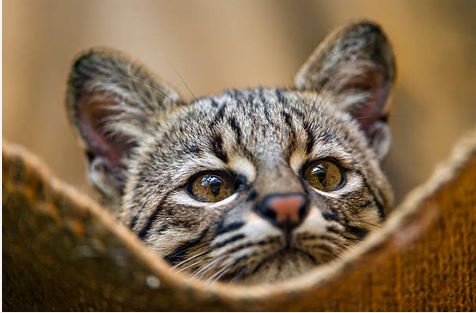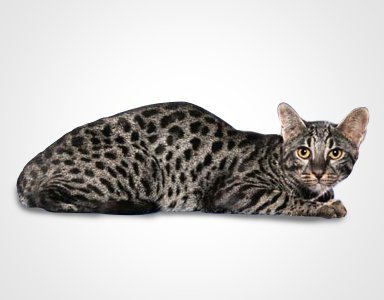What is a Safari Cat?
Safari Cat Breed
Stock Credit; iStock
The Safari breed is a cross between the Geoffroys cat and a domestic cat. The Safri was started in the 70’s, but died off for a while because of increased restrictions on the Geoffroy cat and the difficulty of producing Safari kittens. The Geoffroys cat is a rugged little powerhouse, whose beautiful, well-defined markings remind some of a small version of the Margay or Ocelot.
Body Type
Their body type is similar to that of their wild parent, the Geoffroy. They are a muscular, more compact cat. They have the most exquisite, wild looking head. They have smaller, rounded ears, a broad, blocky head and a wide, blunt nose. Their markings tend to be paw prints or rosettes and usually consist of both. The size of the F1 females will range from approximately 13 to 18 pounds. There are and have been very few males in existence. There were reports of a couple males in the 70’s reaching 35 pounds. In general, most males will weigh between 20 and 25 pounds.
Chromosome Difference
Combining the 36 chromosomes of the tiny South American Geoffroys cat with the domestic cat's 38 chromosomes, this unique hybrid is an extraordinary cat bearing 37 chromosomes! Astoundingly, the chromosomal oddity results in first generation (50% Geoffroys/50% domestic) Safaris that are considerably larger than either parent. A tiny five to eight pound Geoffroys cat mating with a twelve pound domestic can produce a 25 plus pound male Safari and 12 to 16 pound female.
Add the parental chromosomal differences to gestational variations--the domestic's 65 day gestational period and the Geoffroys' 75 days--and one is guaranteed the Safari will remain the rarest of hybrids since they are very difficult to produce.
First produced in the early 1970's, a limited number of Safaris were bred for Washington State University's leukemia research program and a few more for pets. But the difficulties of producing the Safari were too prohibitive. Only recently have a small number of breeders taken up the challenge to again see a resurgence in this illusive hybrid.
Color & Pattern
Coat color varies, ranging from black, to silver-gray, to a deep orange. All but the melanistic (black) have the white eye spot (ocelli) on the back of each rounded little ear.
Ancestor
Solitary and mostly terrestrial, Geoffroys hunt for rodents, reptiles, birds and insects. Wonderful climbers, when hunting from trees, they sneak up on their prey, dropping from low branches onto their target. In captivity, Geoffroys have been reported to walk upside down along a branch and able to hang by their back feet. Somewhat nocturnal, hunting by night and sleeping in trees by day, their activity patterns can be very flexible, getting out and about during the day as well as at night. In South America, the Geoffroys relationship to man runs full circle, from companion, to rodent control, to an animal hunted for its meat and pelt.
Where to buy a Safari Cat?
As of 2022, there are no known breeders of Safari Cats. Please contact us if you are a current producing breeder of Safari Cats.
Marechal Cattery - Sheryl KoontzUSAKenna, West Virginia
Produced F1 Safaris. http://www.safari-cats.com/
Pictures Of Safari Cats
Copyright Helmi Flick, Safari Cat
F1 Safari Cat: Copyright Marechal Cattery
Above is a first-generation Safari cat called Marechal Xeva. She was the first of the Marechal Cattery’s F1 Safari females.




